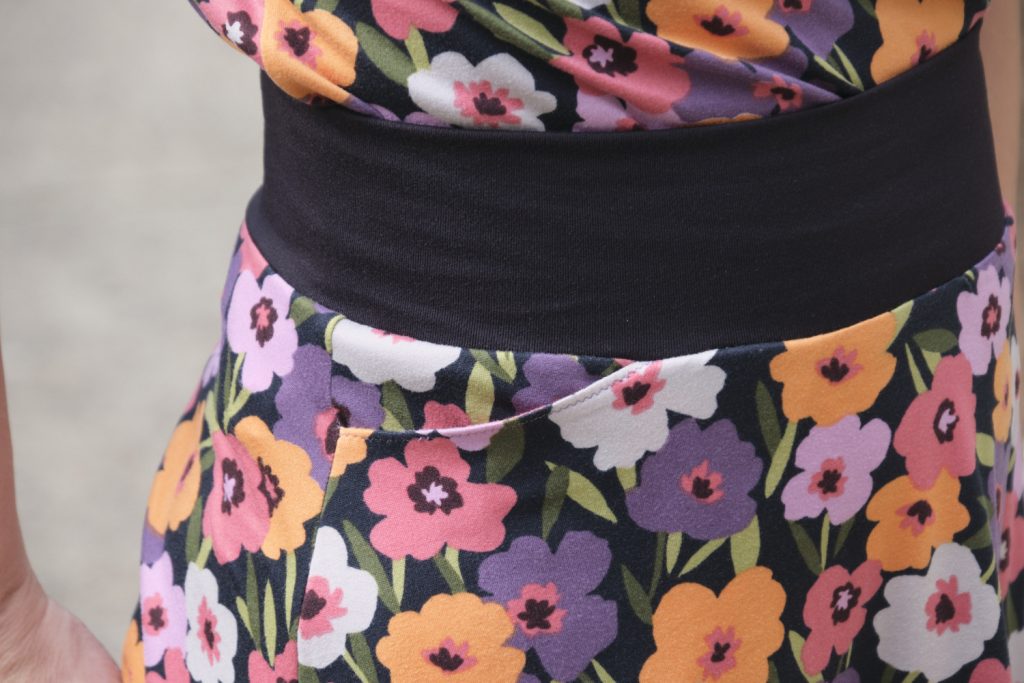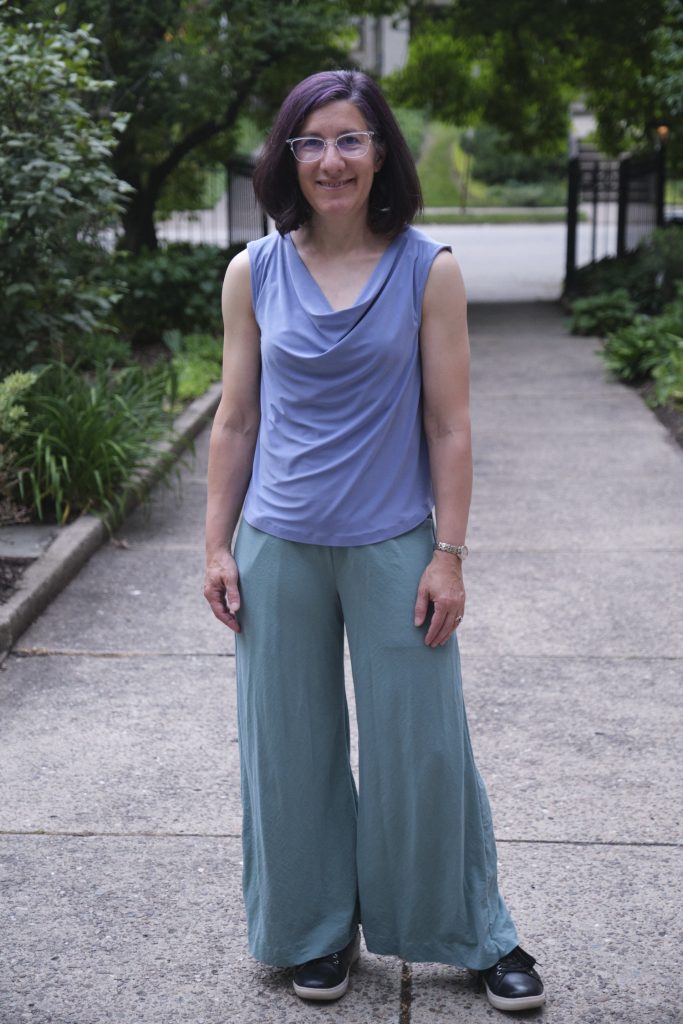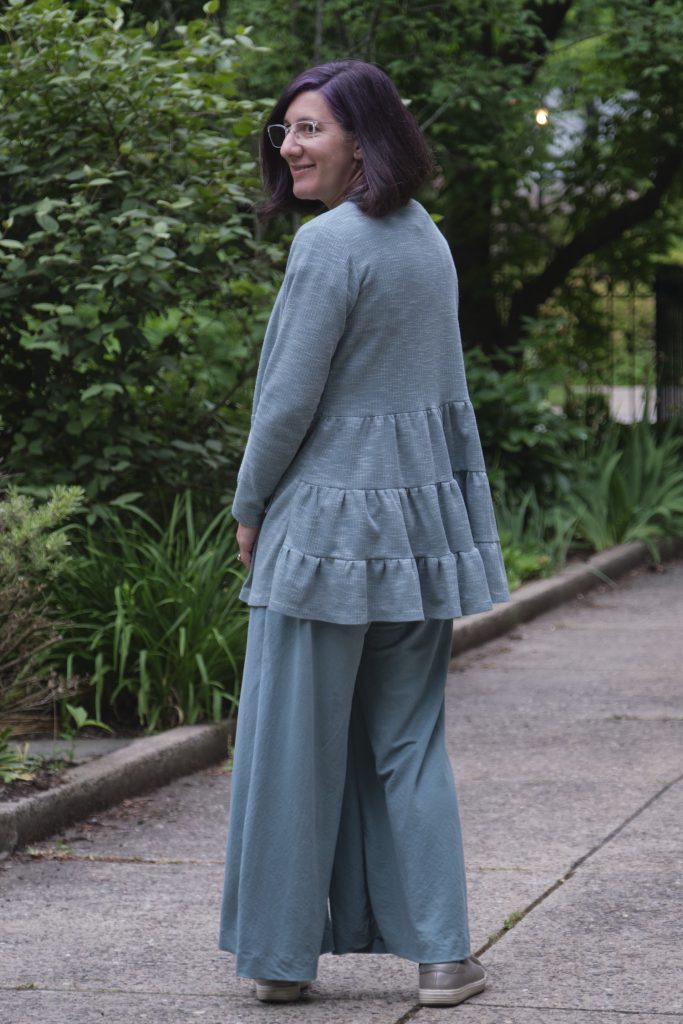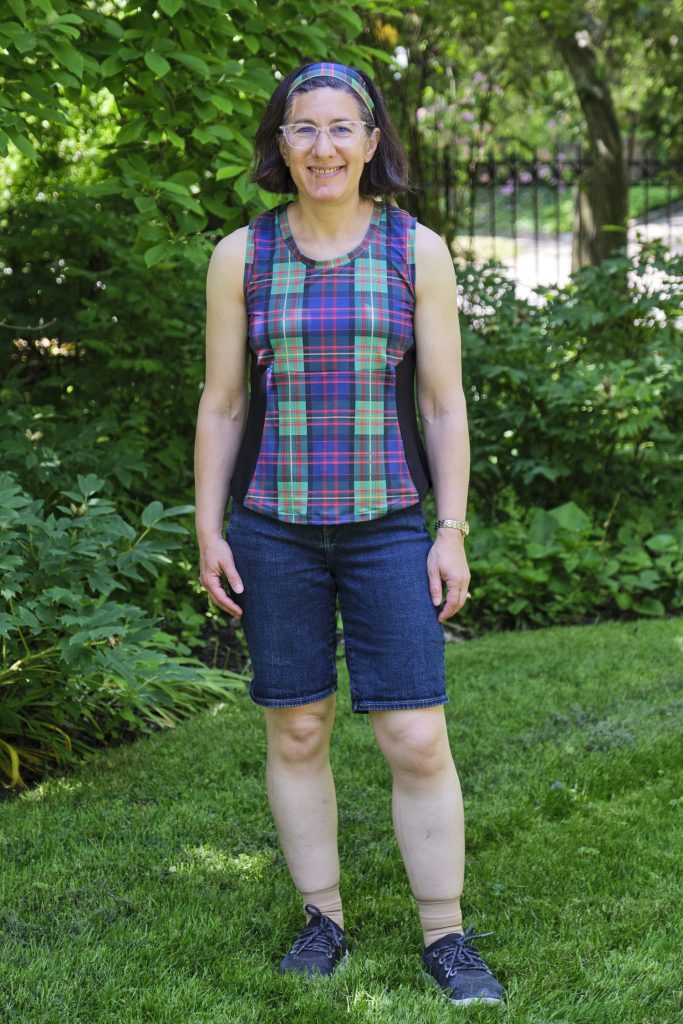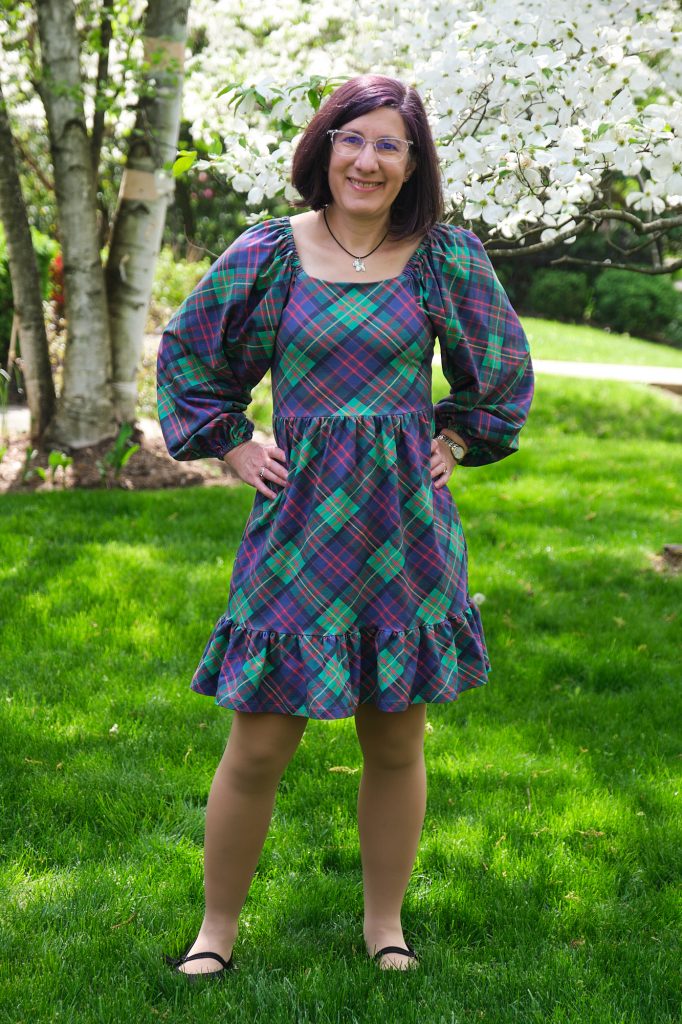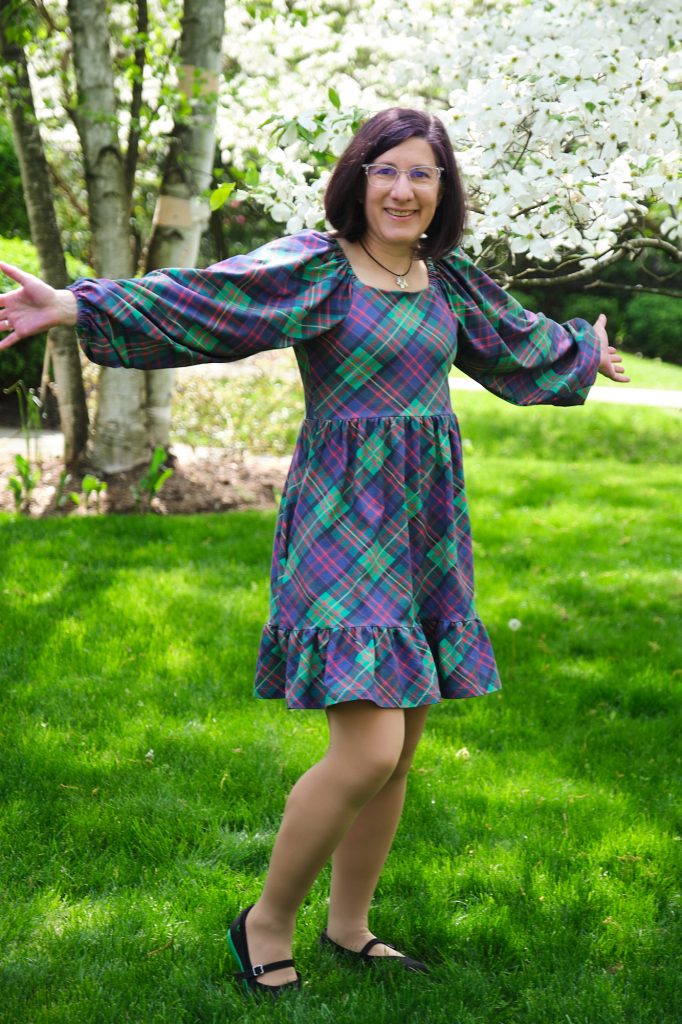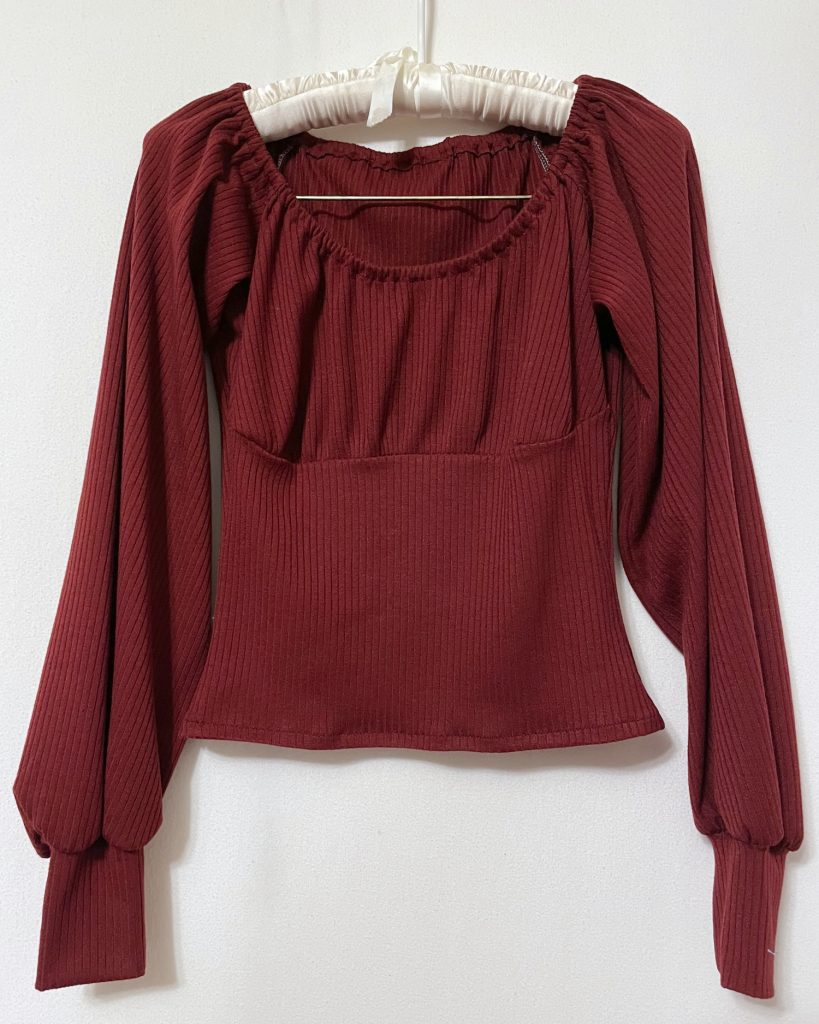Last winter when Petite Stitchery introduced the adult Dovie longlline crop and dress pattern, I knew my teen daughter would love it. Sure enough, I showed her the pattern and for months she kept asking me when I would make it for her. She picked out a 180 gsm light sage green polyester/spandex yummy rib fabric from Surge Fabric and I finally got around to sewing her dress. I sewed the size XS knee length option with the regular front neckline (there is also a lower cut option). The bodice is lined and I used the same fabric for the lining.

The dress was pretty quick to sew — I would have finished the whole thing in one afternoon/evening, except that I added pockets (not in the pattern) and that took extra time so I had to finish hemming it and sew the shoulder ties the next day. The pattern instructions were ok, but could have been clearer. I’m spoiled by Sinclair and Pattern Emporium, which provide very detailed instructions and tips in their patterns. This pattern offered on a little advice on what type of stitches to use (I ended up using a shallow zigzag on my sewing machine for most of it and surging around the waistband, pocket bags, and sides of the skirt) or detailed fabric recommendations for dress and lining (I lined it with the same fabric as the dress but saw suggestions in the Facebook group for lining with power mesh or athletic knit for more support). The pattern also inexplicably is calibrated off by a factor of 10. All of the measurements in the pattern have to be multiplied by 10 (my projector calibration setting is 12.8% for all the other pattern companies but is 128% for PS) — easy to do but why? This pattern uses the burrito method to make the lined bodice straps, and I would probably have been stumped by the instructions if I hadn’t just made a Sinclair Bloom top that used the same technique. I briefly thought I was supposed to attach the waistband to the bodice and the lining waistband separately to the lining, but after pinning it that way figured out that all four layers get sewn together at once.

The pattern suggested that this dress would require 2 7/8 yards of fabric, but from looking at the pieces for size XS, I figured I could make it in less than 2 yards. Indeed, I had almost half a yard left from my 2-yard piece of fabric. I think the crop top version could be made out of leftovers from other projects.
The pattern suggests adding clear elastic in several places, some of which didn’t seem necessary to me. I ended up adding clear elastic to the horizontal part of the front and back neckline as well as right under the bust.

My daughter and I agree that pockets are required on all dresses, so I borrowed the pocket pattern from the Sinclair Yasmin dress and added deep pockets that easily hold a cell phone. The waistband provides sufficient anchoring for pockets and there is enough room at the hips that the pockets do not show through the skirt (although if you put enough in them they will obviously show). My daughter went out with friends and put her phone and wallet in the pockets and came back and told me the big pockets were great and her friends were jealous.
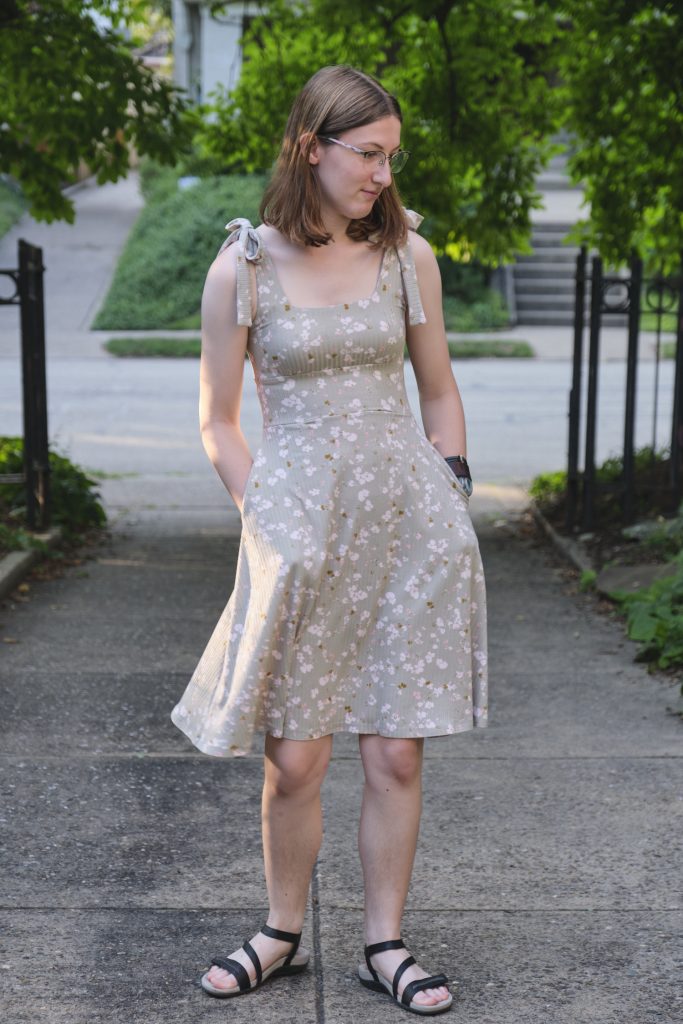
My daughter is about 5’5″ and the knee length comes exactly to her knee. I’m a few inches shorter so would probably cut the skirt about three inches shorter for me.
This is a super cute pattern. The optional (and removable) shoulder ties take it up a level of cuteness too. The cup size options make it easy to get a good fit at the bust. In the Facebook group people report that if you use supportive enough fabric for the lining the dress can be worn without a bra.
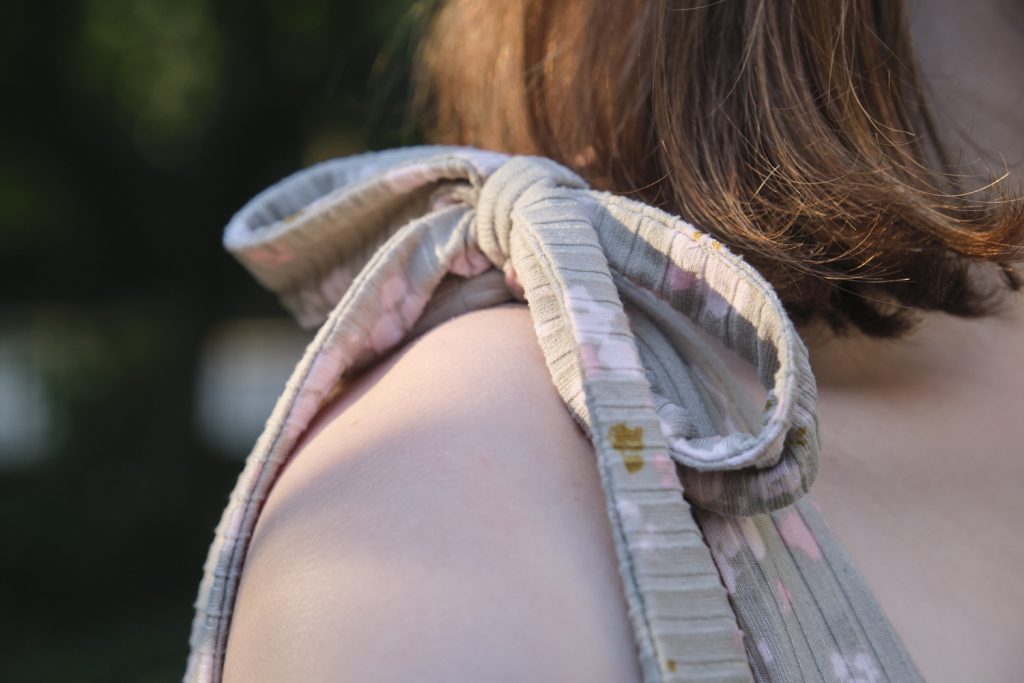
After I finished making my daughter’s dress, I decided it was so cute that I needed a crop top for myself. Except I don’t actually wear crop tops so I took the size small Dovie crop top pattern and added an extra 2.5 inches to the waistband height (extending a total of 5 inches, but it gets folded in half). I used about 2/3 yard of lavender DBP.
I cut and sewed the entire bodice in about 2 hours, having already figured everything out for the dress. The waistband assembly is a bit different for the top, and that’s where I got a bit stumped and there was some trial and error until I landed on the following approach that worked very well for me. I sewed up the sides of the waistband to form a tube and folded it in half so that it has an outer and lining piece. I aligned and pinned the raw edges of the outer and lining and then used a large zig zag stitch along the edge to hold them together. Then I aligned the waistband with the bodice main and lining, pinned, and stitched all 4 layers together with a large zig zag. Finally I surged over the zigzags and added clear elastic to the seam as I went, giving it a gentle stretch. I didn’t bother with the shoulder ties since I expect to wear this with with sweaters or jackets.

It’s a cute little top, but I don’t think it is quite as cute as the dress. Nonetheless, it will go with a number of pants and skirts in my wardrobe, and I expect I will get a lot of wear out of it. I’m modeling it here with DBP Sinclair Cleo palazzo pants I made last year. The look is definitely enhanced with the the right bra (on me that means wide straps, padded cups). I think the straps are set slightly too wide for me, and possibly a tad too long, and if I make this again I’ll try to adjust that.

I had some lavender PyLos Liknit in my stash so decided to make a Pattern Emporium Songbird Kimono jacket to match. I used the crop length with the narrow binding and extended the binding to the bottom (as I have done previously with this pattern). I used 1-inch fusible knit stay tape again to interface the binding. I used the tapered sleeve option and shortened it by 2.5 inches. This is a fantastic pattern with very clear instructions and lots of useful sewing tips. This time I got it right the first time.








